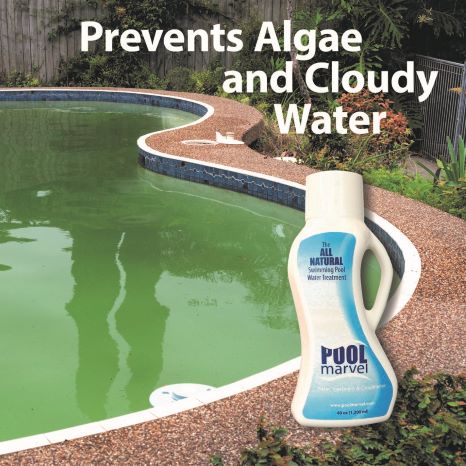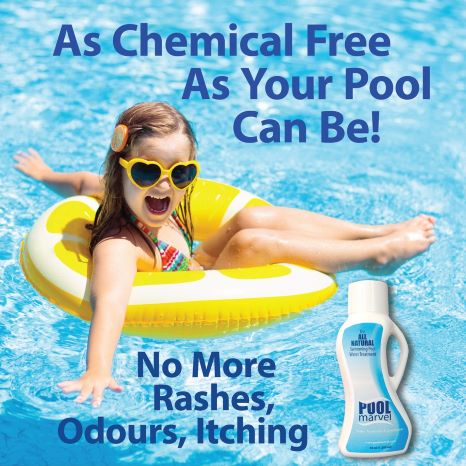
Low Free Chlorine
Free chlorine is a vital pool chemistry component, acting as the primary sanitizer and oxidizer. Since contaminants in pool water and sunlight can affect the amount of free chlorine, the level requires regular monitoring.
When there’s a low free chlorine level, there’s the opportunity for bacteria and algae growth and the creation of unsafe pool water.
Jump To Section:
What Is Low Free Chlorine?
What Is the Right Level of Free Chlorine in Pool Water?
What Causes Low Free Chlorine?
How to Increase Free Chlorine in a Pool
Consistently Low Free Chlorine Levels
How to Raise Free Chlorine in Salt Water Pools
What Is Low Free Chlorine?
Combined chlorine is chlorine that has been used or combined with contaminants and is no longer effective at sanitizing. This process leads to the formation of chloramines. Free chlorine is chlorine that has not yet been combined with contaminants and is still effective at sanitizing. Free chlorine is 25 times more effective as a sanitizer than combined chlorine.
Total chlorine is the amount of combined and free chlorine in your pool water. Free chlorine is calculated by applying the formula total chlorine – combined chlorine = free chlorine. To have properly sanitized pool water, your free chlorine level must stay higher than the combined chlorine level.
When free chlorine levels are low for an extended period, microorganisms and algae can start to form and create a hazardous swimming environment. Low free chlorine can also lead to cloudy pool water.
What Is The Right Level Of Free Chlorine In Pool Water?
Generally, the ideal range for free chlorine in pool water is 1-3ppm, although it depends on your cyanuric acid level and how much you swim.
When the cyanuric level (CYA) is 30, the minimum free chlorine is 2. When it’s 40, the minimum free chlorine is 3. For cyanuric levels of 50, the minimum free chlorine is 4. A cyanuric acid level of 60 should have a free chlorine level of 5.
What Causes Low Free Chlorine?
The amount of free chlorine is constantly being used and needs replenishing. This can be due to several reasons:
Pool Water Contaminants
The purpose of chlorine is to remove contaminants from your pool water. Through this process, your chlorine gets used up, resulting in low free chlorine levels. High levels of organic (leaves, twigs, and branches) and inorganic (suntan lotion, soap, hair products) contaminants are the most common cause of low free chlorine.
To prevent low free chlorine resulting from contaminants, complete regular skimming, brushing, and vacuuming to remove debris and buildup. Shock your pool weekly and adjust the chlorine level as needed.
UV Rays From Sunlight
The sun causes chlorine ions to separate, which eventually destroys them. In outdoor pools, the sun’s UV rays can cause free chlorine levels to naturally decline by 2-4ppm daily. When your pool’s not in use, use a solar pool cover as a barrier between your pool water and the sun.
Improper Water Chemistry
Each chemical in your pool water affects the other. If they’re not correctly balanced, the sanitizer can’t work properly, and bacteria and algae can grow, consuming free chlorine. Balance your pool water regularly to prevent low free chlorine from improper water chemistry.
High Bather Loads
Hosting a large pool party can introduce a much higher number of contaminants than your pool typically experiences. When more contaminants need to be removed, the free chlorine gets used up much quicker. Shock your pool following a major pool party and regularly monitor your chlorine levels.
How To Increase Free Chlorine In A Pool
There are three popular ways to raise free chlorine levels in pools:
Raising Free Chlorine with Trichlor
Trichlor, also known as trichloroisocyanuric acid, is especially popular in outdoor pools. Inexpensively priced, this stabilized chlorine is available in various formats such as pucks, sticks, and granules. It has slow-dissolving properties making it highly suitable for pool owners with a chlorinator.
Caution needs to be taken when using trichlor. Because it’s highly concentrated, trichlor can cause skin burns. Inhaling its fumes can be hazardous. The product’s low alkalinity level can also cause pool wall and equipment corrosion. Avoid this from happening by adding sodium bicarbonate to your pool water. Over time, trichlor increases the cyanuric level of your pool water.
Start small when adding trichlor to your pool water to avoid over-chlorinating. Test your levels before adding additional chlorine.
Raising Free Chlorine with Dichlor Granules
Dichlor granules are commonly used in above-ground pools, indoor pools, spas, hot tubs, and Jacuzzies.
Unlike trichlor, dichlor is fast-acting, making it especially helpful when a quick dose is needed before a pool party. It does not affect total alkalinity and only slightly affects the pH level. However, it’s expensive and unsuitable for chlorinators, feeders, or floaters because it’s fast-dissolving.
Start small when adding dichlor to your pool water to avoid over-chlorinating. Test your levels before adding additional chlorine.
Raising Free Chlorine by Shocking Your Pool
Chlorine-based shock can quickly increase the free chlorine level, whereas non-chlorine-based shock reduces combined chlorine but does not increase free chlorine levels. Chlorine-based shock should be used only when the chlorine level needs to increase by a minimum of 10ppm.
Follow the directions on the package to calculate the amount of shock to use based on your pool size. Keep your pool uncovered after the shock treatment to allow the oxidation gasses to escape into the air. Avoid shocking in the sunlight as it will decrease the pool’s chlorine level.
Consistently Low Free Chlorine Levels
If you’re regularly experiencing low free chlorine levels in your pool, one of the following reasons may be to blame:
Low Cyanuric Acid Level
If your pool’s cyanuric acid level is too low, much of your chlorine may evaporate quickly in the sun. Follow the directions on the packaging to add the appropriate amount of cyanuric acid to your pool water, and avoid adding more than 20 ounces at once.
A Low Salt Level
When there’s a lack of salt in your pool, your chlorinator won’t work correctly and won’t create enough chlorine. Keep your pool’s salt level between 3,000-3,500ppm, or whatever your salt chlorine generator manufacturer recommends. Add salt whenever necessary.
Dirty Salt Cell
If your salt cell needs a deep clean, your chlorine level may constantly be low. You’ll need to perform a hydrochloric acid bath for approximately five to ten minutes.
Outdated Chlorinator or Chlorinator Salt Cell
Equipment over ten years old may not work correctly and require replacing. A malfunctioning power board is a common problem.
How To Raise Free Chlorine In Salt Water Pools
If you’re experiencing low chlorine in your saltwater pool, you’re not correctly adjusting your saltwater chlorine generator (SWCG). If the percentage setting is too low, an inadequate level of chlorine is being produced to supplement the used chlorine in your pool water.
Measure your free chlorine levels frequently, especially after heavy pool usage and extreme heat. Adjust the free chlorine level by raising the percentage setting of your SWCG. If that doesn’t increase your free chlorine, try increasing your pump’s operating time as well.
If you’re still experiencing problems, the cause could be early stages of algae, chloramine or ammonia, or calcium buildups in your salt cells.


